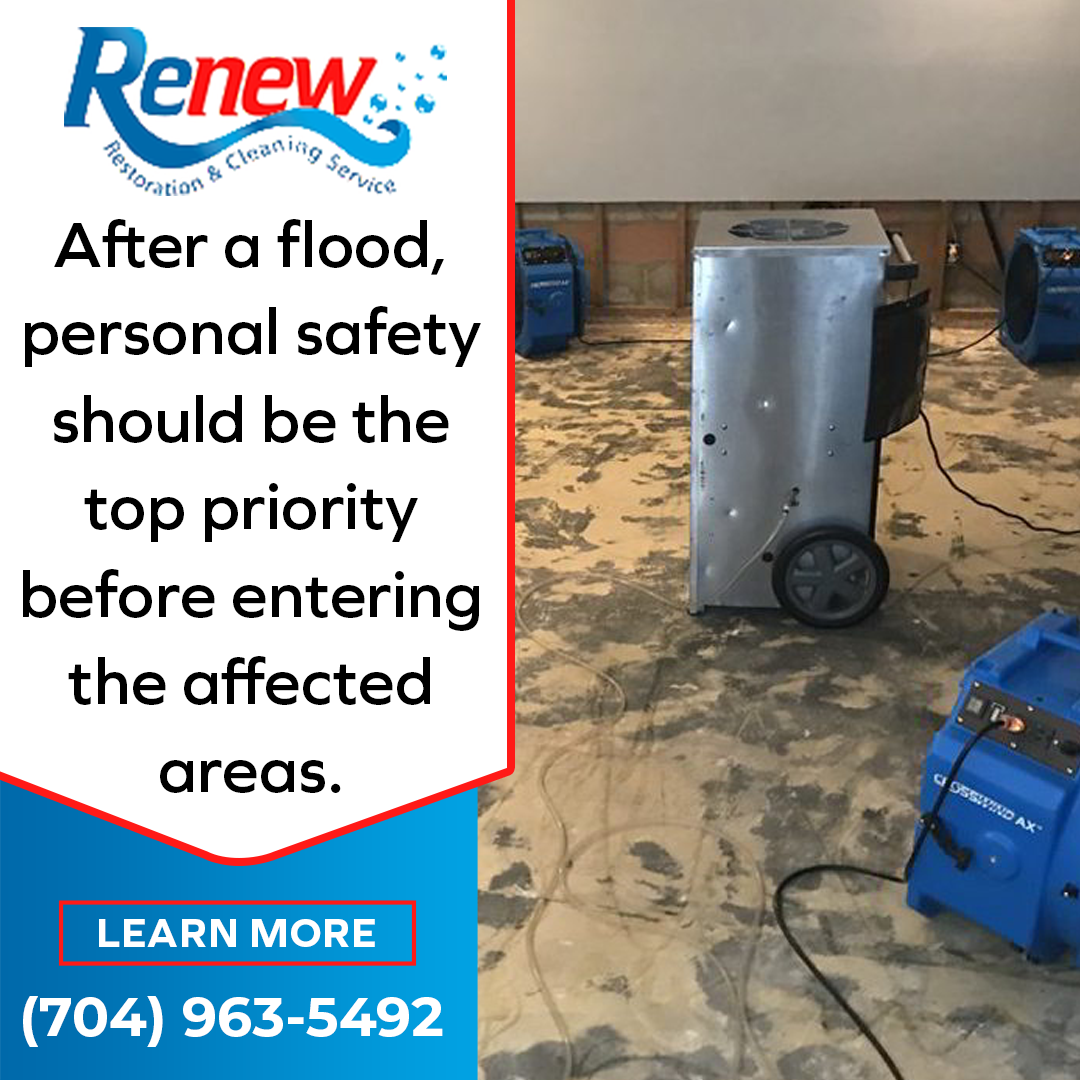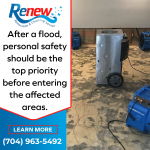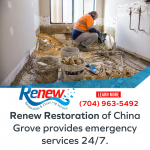Carpeting is popular in many households, providing warmth, comfort, and aesthetic appeal to homes. However, when floodwaters wreak havoc on your home, carpets can be among the hardest hit. Carpets absorb water quickly and are easily damaged. So, can you salvage carpets after flood damage? That depends on the extent of the damage, how quickly you respond to the situation, and the type of carpet you have installed in your home. If you aren't sure about repairing or replacing your carpets post-floods, Renew Restoration Of China Grove can help you with some tips.
Renew Restoration Of China Grove provides water damage, fire damage, and storm damage restoration services. Their IICRC-certified experts provide emergency flood restoration services in China Grove, NC. Their goal is to support customers and enable them to recover quickly from any disaster with minimal damage. Renew Restoration Of China Grove provides information to help homeowners decide if carpets can be salvaged after flood damage.
.png)
These are immediate measures to take after flooding occurs. Once it's safe to enter your home after a disaster like flooding, start by assessing the damage done by inspecting your flooring carefully. If there are visible signs of water damage like standing water, warping, or discoloration on your carpets or wooden floors, you must act fast to prevent structural damage due to moisture.
Identifying the Type of Water Damage
When it comes to salvaging carpets after flood damage, identifying the type of water damage is essential. The source of the water damage and the time it was left unattended are crucial factors that determine whether a carpet can be salvaged or not. If the water damage is from a clean source, like a broken pipe or sink, and is identified within 48 hours, there is a chance to save the carpet. However, if the water damage is Category 3, that is, from a contaminated source, like sewage or floodwater, it's best to discard the carpet. Every water damage situation is unique, so it's essential to consult a professional like Renew Restoration of China Grove to assess the damage properly.
Steps to Dry Out a Wet or Flooded Building
Once standing water has been removed, steps can be taken to dry out the affected area. One effective method is to use a dehumidifier, which helps to pull moisture out of the air and dry out any remaining moisture in the carpet. Fans can also be used to circulate air and help moisture evaporate. If there isn't too much standing water, a wet-dry vacuum can be used to remove the moisture. It's crucial to remove residual mud and soil from furniture and appliances. Haul wet rugs and furniture into the sun to reduce the inside moisture level. Sheet vinyl or linoleum flooring should be removed to promote maximum evaporation. Any carpeting or padding that has been soaked should be immediately lifted to start drying it out and to preserve the wood underneath. It's crucial to stay safe when cleaning up after a flood and always wear protective gear while shutting off gas and electricity.
Saving Clean Water-Damaged Carpets
To save clean water-damaged carpets, remove as much water as possible using a wet-dry vacuum. Then, finish drying out the room with fans and dehumidifiers. The longer the water stays in the carpet, the more possibility there is for mold growth. If the carpet has been wet for more than 48 hours, it may need to be replaced. It is best for professional cleaners to thoroughly clean and sanitize the carpet.
When homeowners understand the potential dangers that come with water damage, they can prevent mildew growth by following basic salvage guidelines after a flood. By staying vigilant and taking the necessary precautionary measures, homeowners can save their water-damaged carpets and protect their homes from future flooding.
Basic Salvage Guidelines After a Flood
After a flood, personal safety should be the top priority before entering the affected areas. Carpets must be dried within the first two days to prevent mold and mildew growth. For large areas, it's recommended to hire a professional for the job. Carpets soaked with sewage should be discarded due to health risks. Walls, baseboards, and furniture are also at risk of damage, and it's crucial to clean them well to prevent further destruction. The room's inventory should be salvaged or elevated, if possible. Following basic salvage guidelines and prioritizing safety during the cleanup process is essential.
.png)
Flood Restoration Services from Renew Restoration of China Grove, NC
In the case of flood damage, it is better to hire professional flood restoration services. With their training, specialized equipment, and experience, flood restoration service technicians will dry and clean affected buildings quickly and efficiently. This ensures your home or business is back to normal with minimal disruption of normal routines and less risk for complications. Renew Restoration of China Grove provides emergency services 24/7. For the best flood restoration services in China Grove, NC, contact Renew Restoration of China Grove at (704) 963-5492.






























